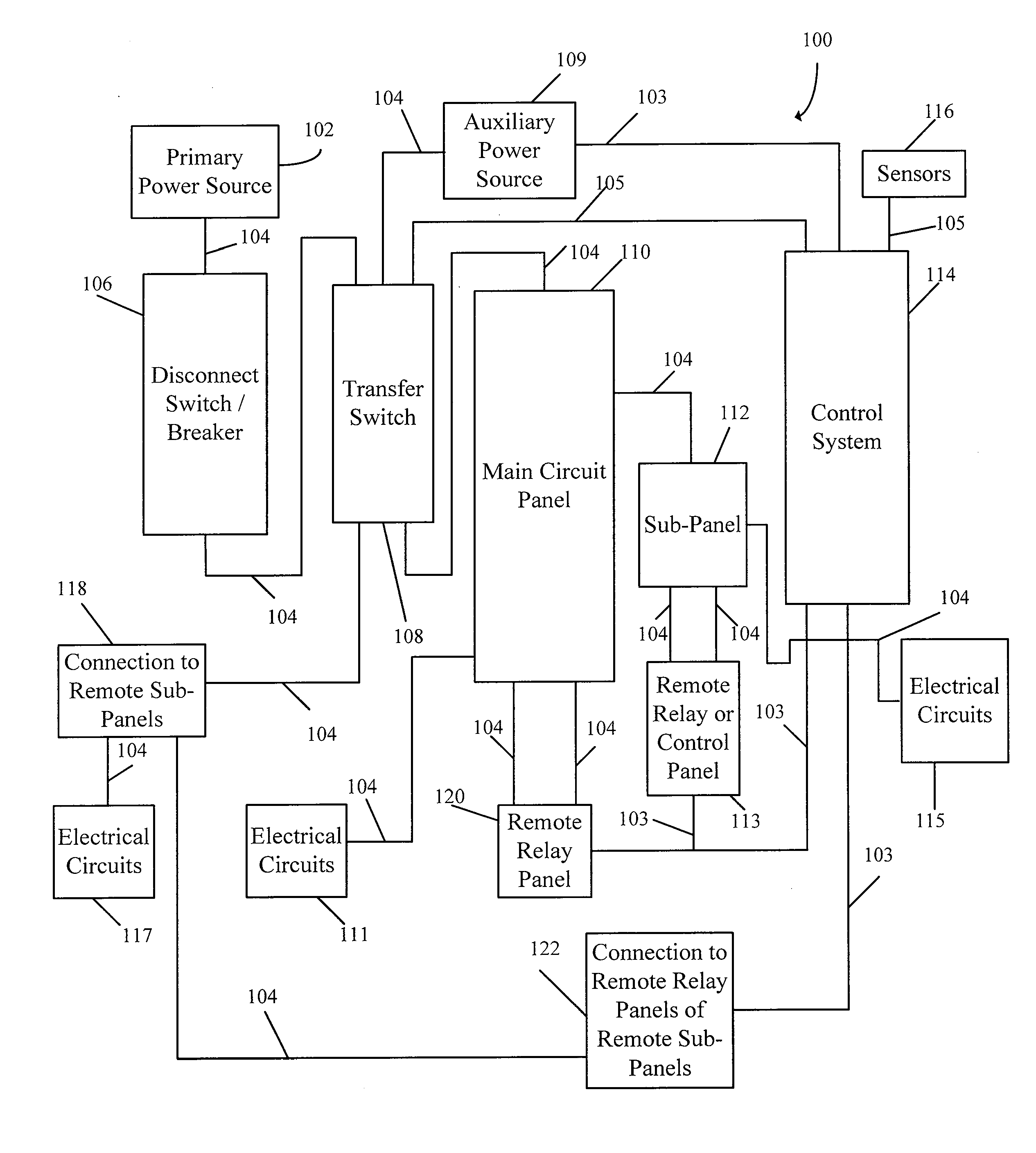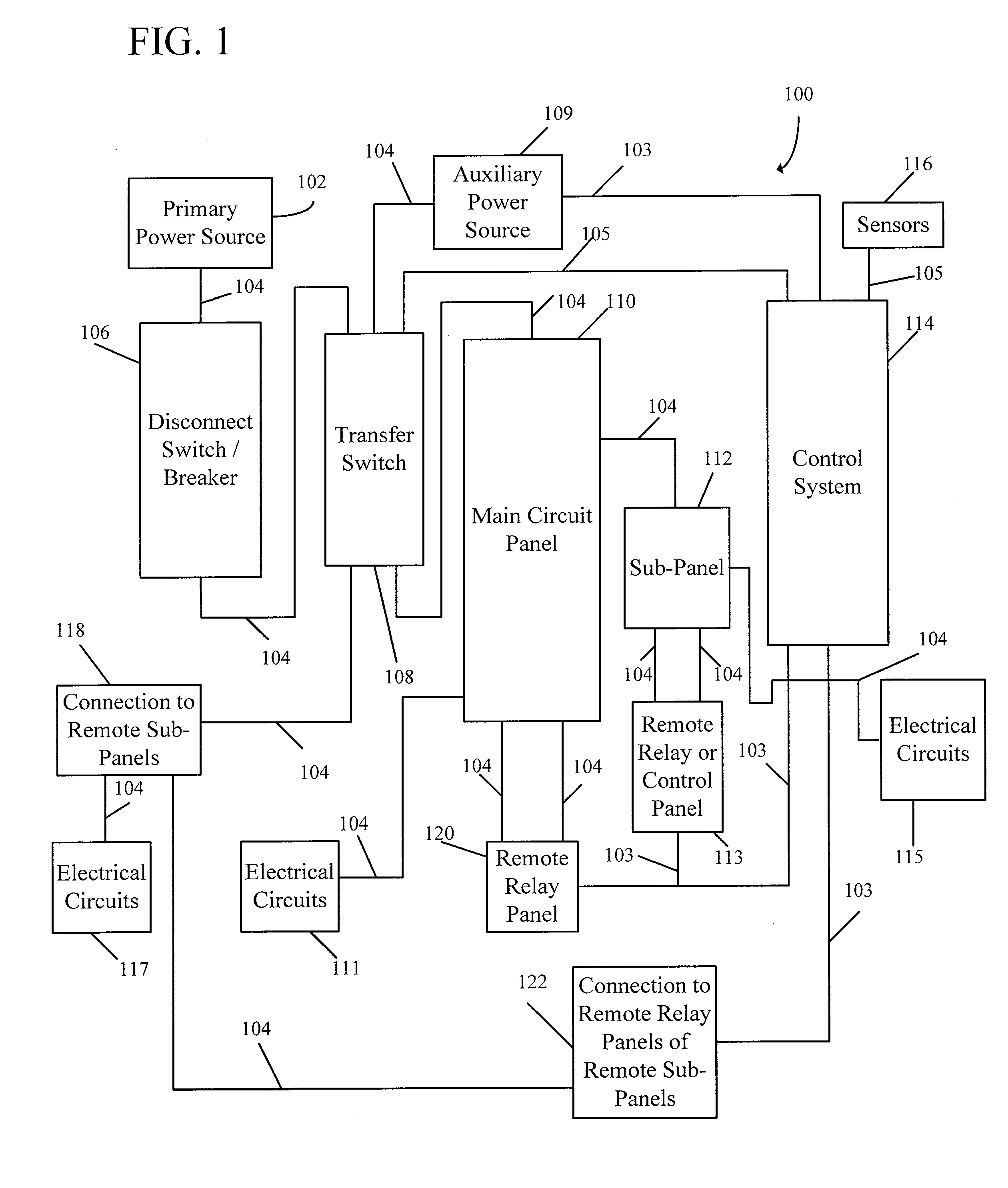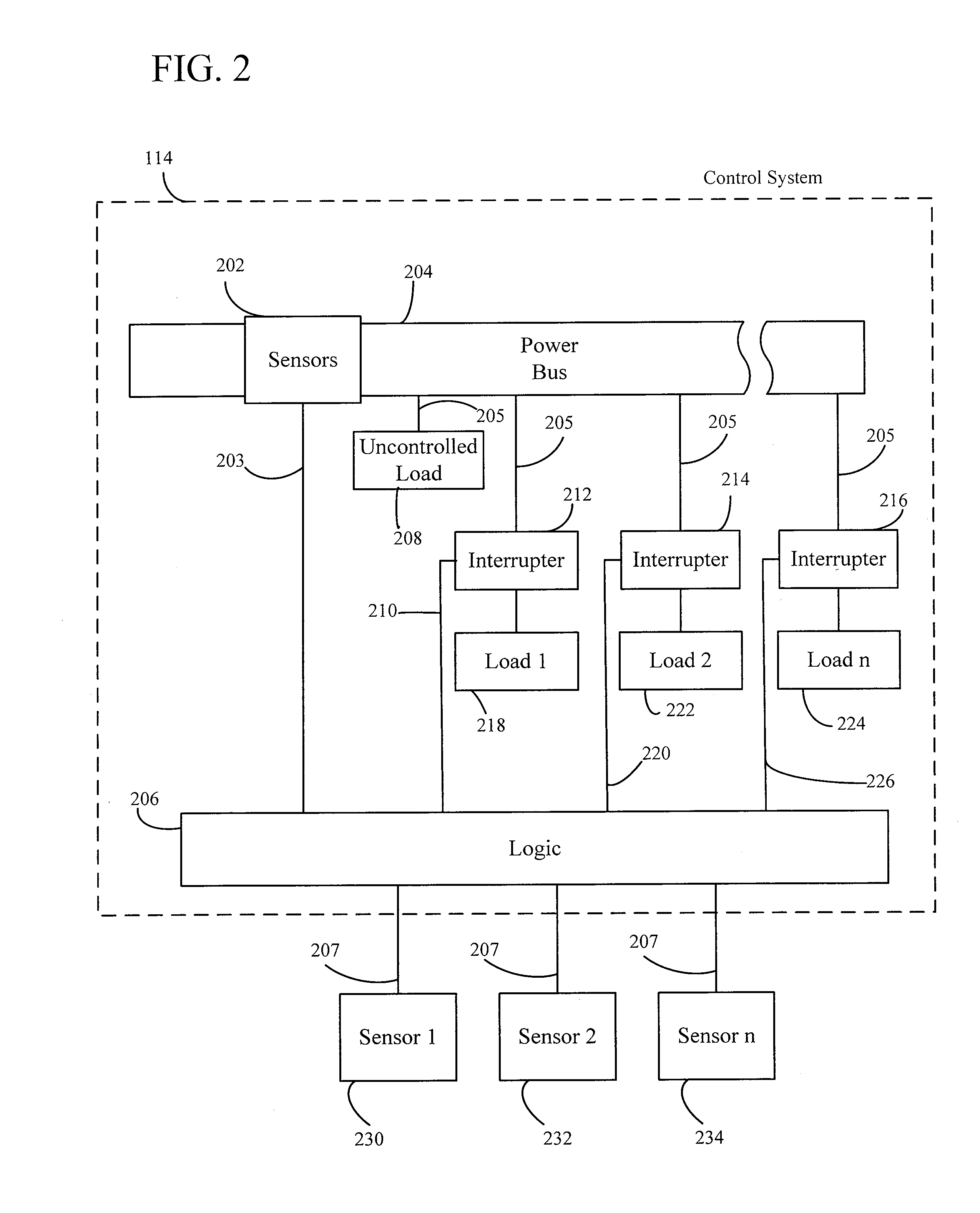Energy management system for auxiliary power source
a technology of energy management system and auxiliary power source, applied in the direction of dc source parallel operation, emergency power supply arrangement, sustainable building, etc., can solve the problems of personal injury and/or damage to utility equipment (transformers, etc., and achieve efficient resolution, optimize the use of generator power source, and monitor and balance
- Summary
- Abstract
- Description
- Claims
- Application Information
AI Technical Summary
Benefits of technology
Problems solved by technology
Method used
Image
Examples
Embodiment Construction
[0046]Detailed illustrative embodiments of the present invention are disclosed herein. However, techniques, systems, and operating structures in accordance with the present invention may be embodied in a wide variety of forms and modes, some of which may be quite different from those in the disclosed embodiments. Consequently, the specific structural and functional details disclosed herein are merely representative, yet in that regard, they are deemed to afford the best embodiments for the purposes of disclosure and to provide a basis for the claims herein, which define the scope of the present invention. The following presents a detailed description of preferred embodiments (as well as some alternative embodiments) of the present invention.
[0047]A further understanding of the present invention can be obtained by reference to a preferred embodiment. Although the illustrated embodiment is merely exemplary of systems for carrying out the present invention, both the organization and me...
PUM
 Login to View More
Login to View More Abstract
Description
Claims
Application Information
 Login to View More
Login to View More - R&D
- Intellectual Property
- Life Sciences
- Materials
- Tech Scout
- Unparalleled Data Quality
- Higher Quality Content
- 60% Fewer Hallucinations
Browse by: Latest US Patents, China's latest patents, Technical Efficacy Thesaurus, Application Domain, Technology Topic, Popular Technical Reports.
© 2025 PatSnap. All rights reserved.Legal|Privacy policy|Modern Slavery Act Transparency Statement|Sitemap|About US| Contact US: help@patsnap.com



